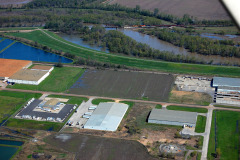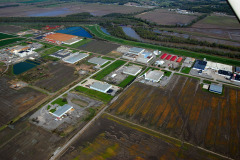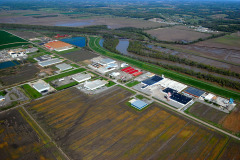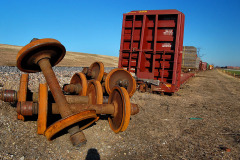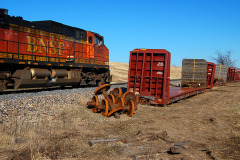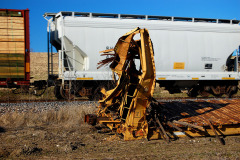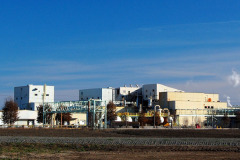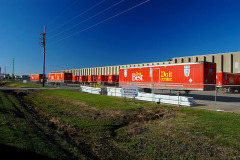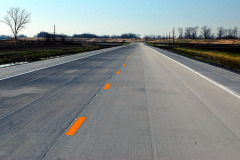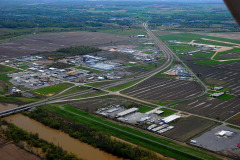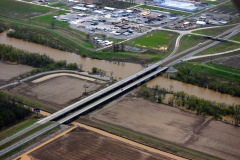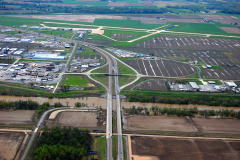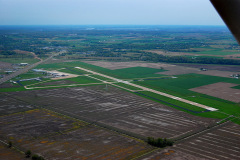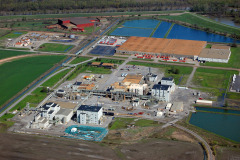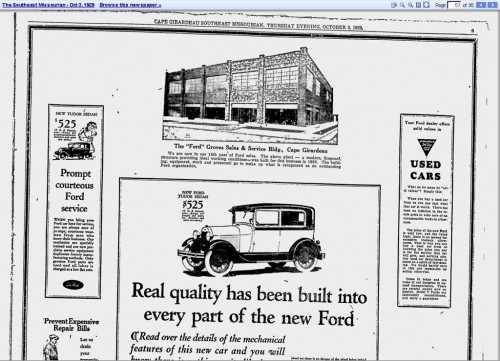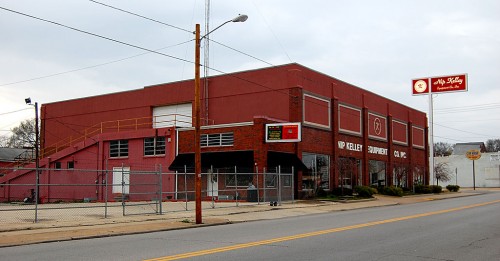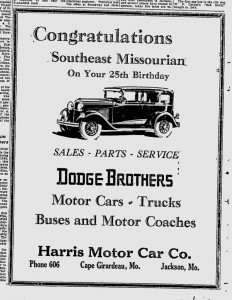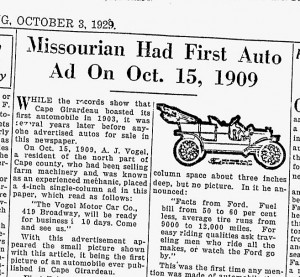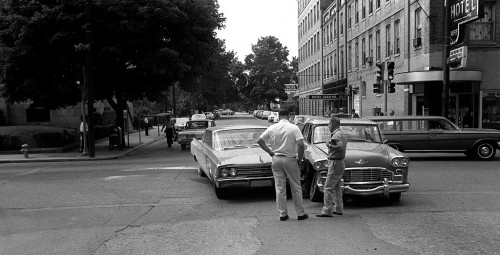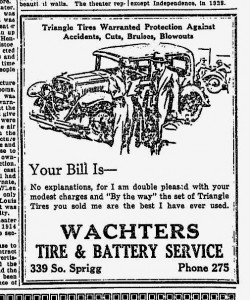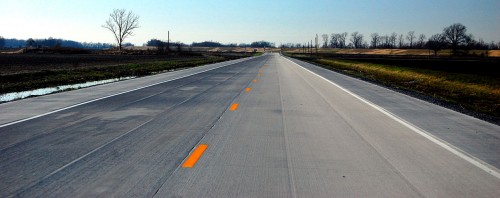 When bicycle tourist John Gorentz, AKA Spokesrider, passed through Cape on his way from Michigan to New Madrid, I tried to pick him a better route to follow than the Missouri River Trail that runs through the hills and curves of New Hamburg. One alternative was to take Nash Road. Unfortunately, at that time is was a dusty gravel road. On a recent trip to the airport to eat, we decided to see if the road was finished. It is and it is really nice. (Click on any photo to make it larger.)
When bicycle tourist John Gorentz, AKA Spokesrider, passed through Cape on his way from Michigan to New Madrid, I tried to pick him a better route to follow than the Missouri River Trail that runs through the hills and curves of New Hamburg. One alternative was to take Nash Road. Unfortunately, at that time is was a dusty gravel road. On a recent trip to the airport to eat, we decided to see if the road was finished. It is and it is really nice. (Click on any photo to make it larger.)
Bloymeyer roundabout
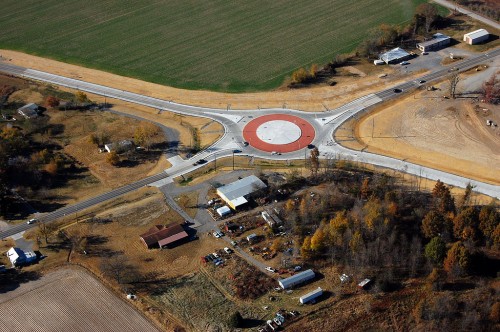 When I was flying aerials in November 2010, I noticed the Bloymeyer roundabout joining Nash Road, Hwy 25 and Hwy 77 had been completed. In this photo, Nash Road comes in from the top left. Hwy 25 from Jackson and Dutchtown is on the lower left and then turns to the right to go to Advance and Bloomfield. Hwy 77, at the top right, goes to Chaffee.
When I was flying aerials in November 2010, I noticed the Bloymeyer roundabout joining Nash Road, Hwy 25 and Hwy 77 had been completed. In this photo, Nash Road comes in from the top left. Hwy 25 from Jackson and Dutchtown is on the lower left and then turns to the right to go to Advance and Bloomfield. Hwy 77, at the top right, goes to Chaffee.
Mario’s Pasta House and a water hole is opening up at the intersection to take advantage of the traffic coming off I-55 and headed through. I wouldn’t be surprised to see other businesses open up, maybe even the old Montgomery Drive-in.
A nail in the coffin for Dutchtown
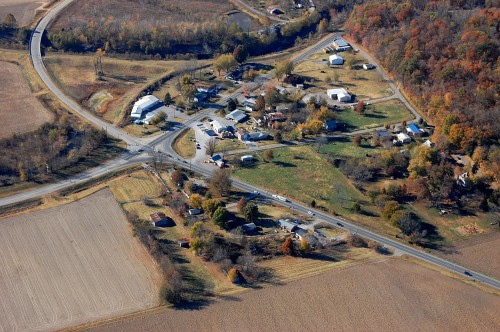 This is going to put another nail in the coffin of Dutchtown. Northbound I-55 traffic headed to towns south and west of Cape won’t have to go all the way to Hwy 74 and then through Dutchtown. It’ll be able to take a fast (60 mph), straight road with good shoulders straight down to Hwy 25. There’s not much out there yet except farm land, so there aren’t many driveways and side roads to watch.
This is going to put another nail in the coffin of Dutchtown. Northbound I-55 traffic headed to towns south and west of Cape won’t have to go all the way to Hwy 74 and then through Dutchtown. It’ll be able to take a fast (60 mph), straight road with good shoulders straight down to Hwy 25. There’s not much out there yet except farm land, so there aren’t many driveways and side roads to watch.
When Hwy 74 floods at Dutchtown, which it seems to be doing more and more often, traffic has to go all the way to Jackson to get through. Nash Road is on the dry side of the Diversion Channel, so the highway department won’t have any incentive to raise the roadbed in Dutchtown to keep it above water.
Nash Road: south of Diversion Channel
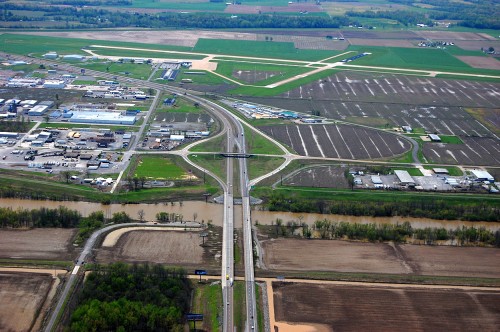 Nash Road starts south of the Diversion Channel and north of the Cape Girardeau Airport.
Nash Road starts south of the Diversion Channel and north of the Cape Girardeau Airport.
Road is a shipping hub
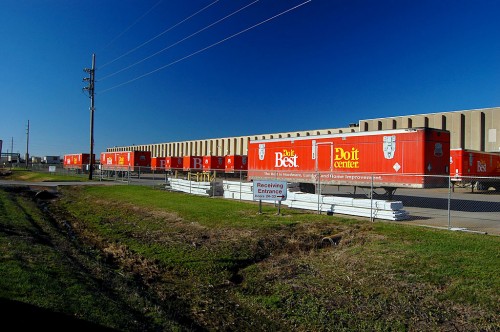 I was surprised at the number of warehouses and depots that have grown up on the road.
I was surprised at the number of warehouses and depots that have grown up on the road.
Railroad derailment
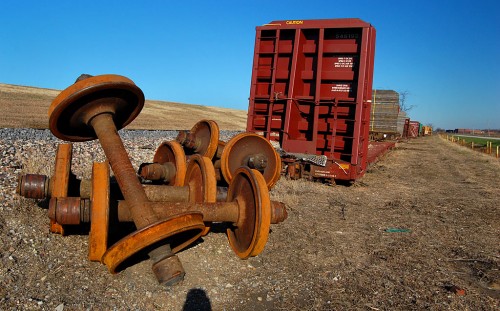 In early October, 15 empty cars on a Burlington Northern Santa Fe train derailed on the tracks that parallel Nash Road. Nobody was injured and no hazardous chemicals were involved, The Missourian reported. I include these photos only because you could see them from Nash Road and because Keith Robinson, a railroad buff, is a regular reader.
In early October, 15 empty cars on a Burlington Northern Santa Fe train derailed on the tracks that parallel Nash Road. Nobody was injured and no hazardous chemicals were involved, The Missourian reported. I include these photos only because you could see them from Nash Road and because Keith Robinson, a railroad buff, is a regular reader.
Nash Road photo gallery
Here is a gallery of photos taken of and on Nash Road. Click on any image to make it larger, then click on the left or right side to move through the gallery.

